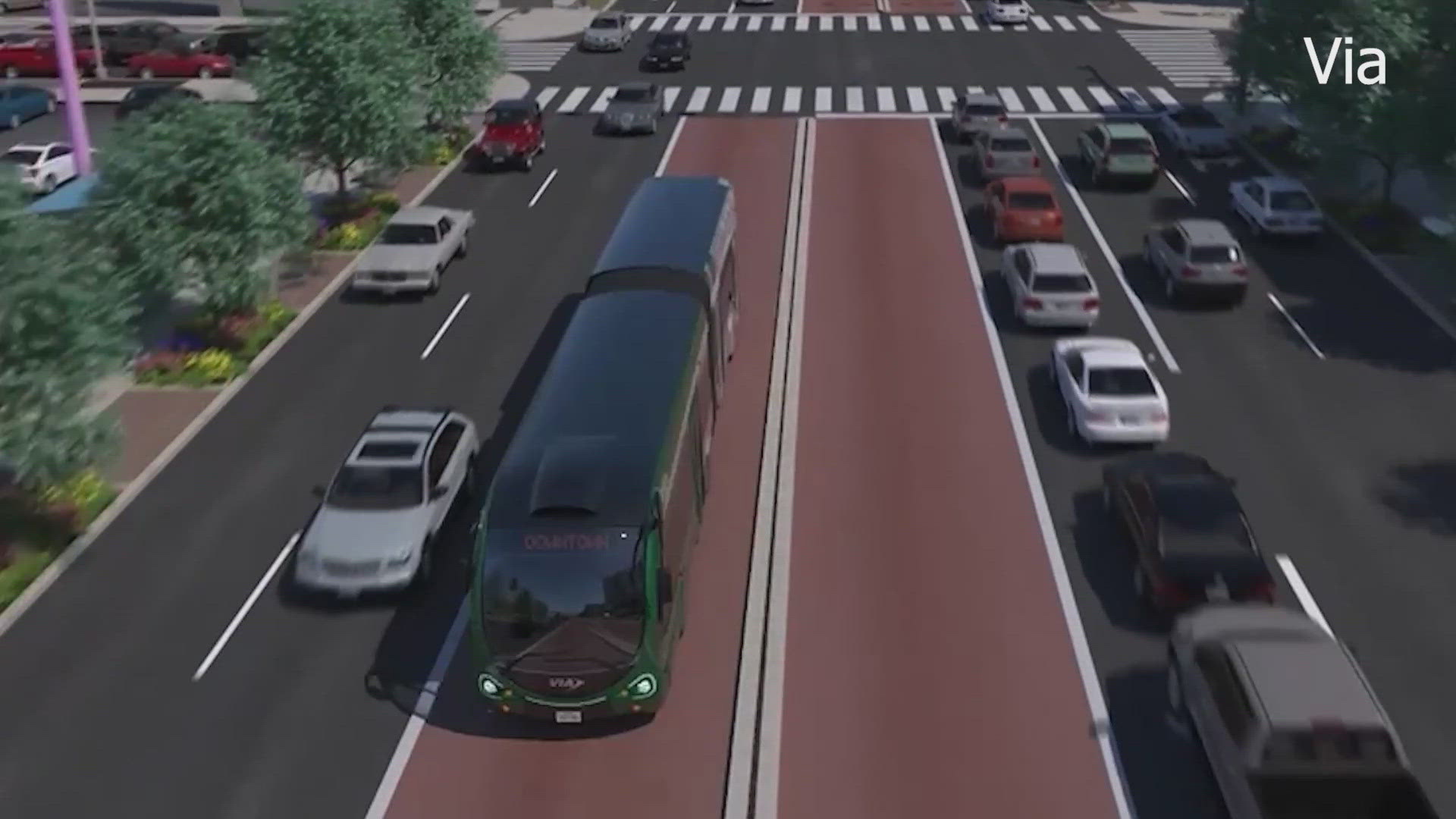SAN ANTONIO — San Antonians will soon have a whole new way of getting around two major corridors of the city that mimics the service of light rail.
The Advance Rapid Transit (ART) project is VIA's new line that establishes dedicated bus lanes to quickly get people up and down San Pedro Avenue, connecting the San Antonio International Airport to the north with the San Antonio Missions National Historic Park on the south side.
What is ART?
The first phase in the project will be the Green Line covering 11.7 miles along San Pedro Avenue. VIA hopes to add more lines in the future.
What sets this new line apart from existing bus routes in San Antonio is that ART service will be high-frequency, level boarding, off-board fare collection, and transit signal priority. Artistic renderings of the stops show dedicated boarding platforms in the center of the street, similar to light rail systems.
"We've spent a lot of time with the community over the past decade asking, 'What do you want to see from your transit service for our region.' They wanted to see more frequent service, more direct service, service that would get them faster from point A to point B," John Tiemann, VIA's Manager of Strategic Initiatives and Project Manager for Public Engagement, said.

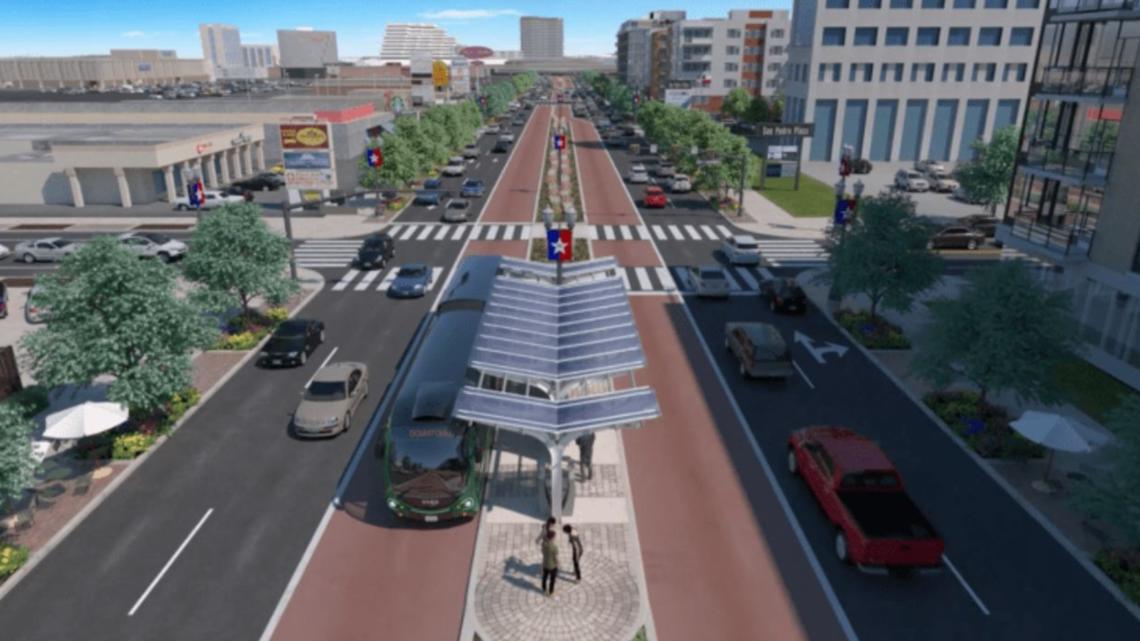
A map of the route shows several new stations along San Pedro Avenue from the airport to the historic missions through downtown. The line will connect through existing transit services to Brooks Transit Center to the south and Stone Oak Park & Ride to the north.

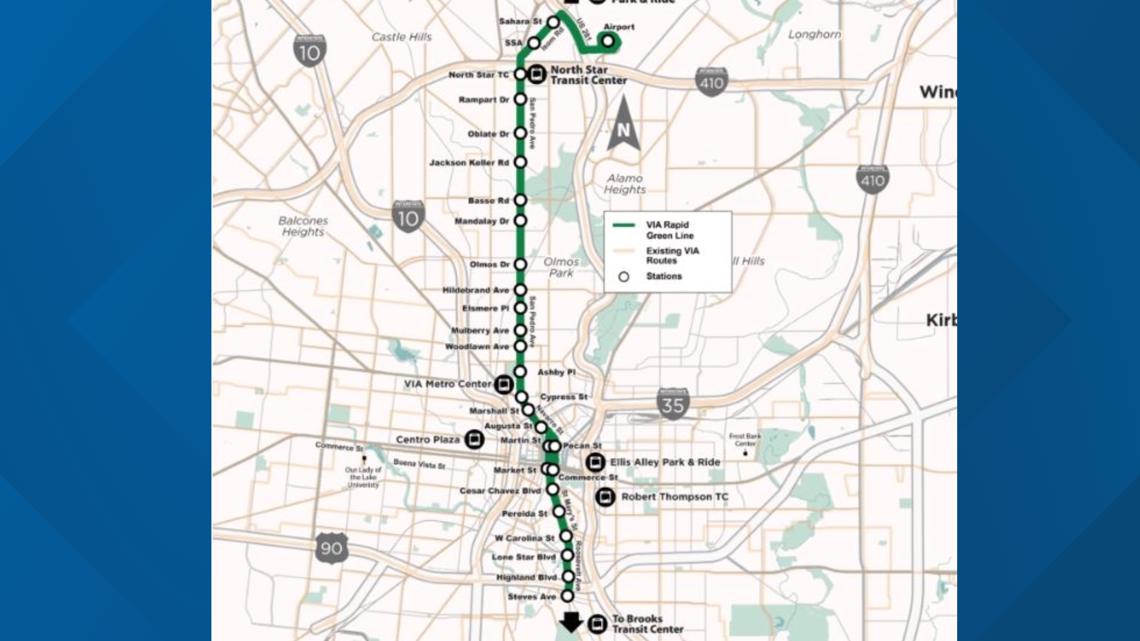
A second ART corridor is proposed to run from east to west. That route is being called the Silver Line and runs between Our Lady of the Lake University on the west side and the Frost Bank Center on the east side.
See map below for proposed Silver Line route.

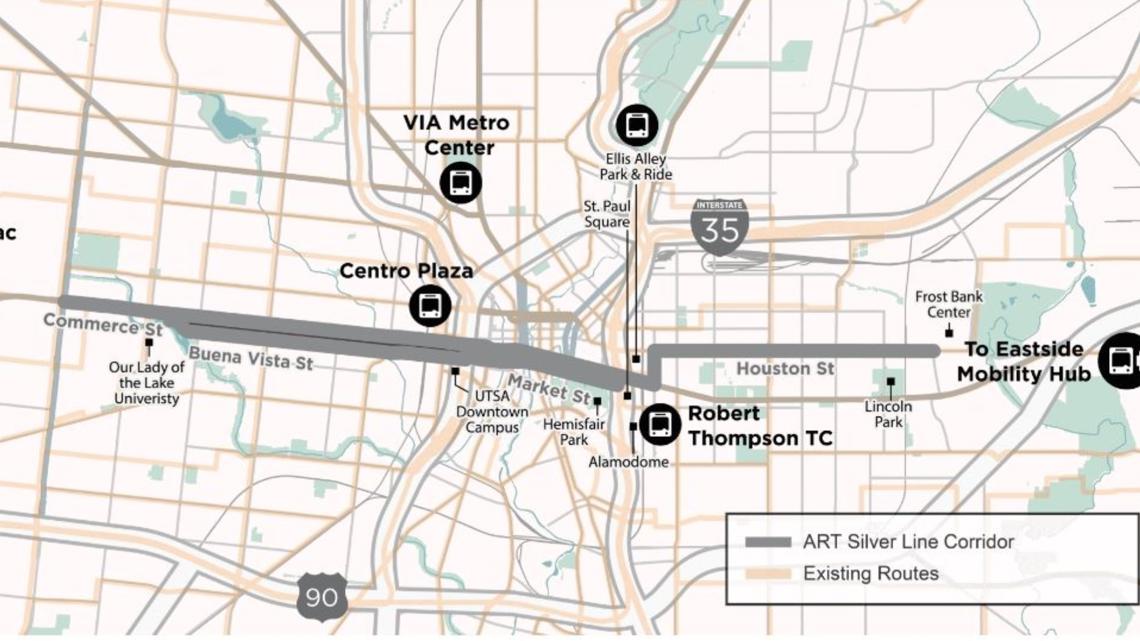
What makes it different from existing bus service?
Currently, those trying to get downtown have to catch the number 3 or number 4 bus lines.
Richard Scheffel has been catching the bus for decades, and explains it currently takes around 45 minutes to get downtown, not to mention the time he spends waiting for the bus.
"[I catch the bus] maybe four or five times a week plus on the weekends, Saturdays and Sundays, the buses take longer" Scheffel said. "And on the holidays, they take longer."
Tiemann says the main difference between the ART lines and VIA's existing bus service is the speed and frequency of the service. He says they have heard feeback from the community that the duration between buses can be a problem for riders. Because of the dedicated lanes that will be in place with ART, a bus will come by every ten minutes on the weekdays.
"There's also the amenities. So we have the level boarding, that's a part of the VIA rapid program or the VIA Rapid Green Line specifically. We have the stations that are accessible from that perspective. We have pay-before-you-board to help streamline that service," Tiemann said.
He also said those added things do make it similar to light rail. Efforts were made in San Antonio to get commuter rail lines approved in both 2000 and 2014, but those efforts ultimately failed.
"So in 2014, we had the streetcar initiative, which the community told us, 'Hey, we're not ready for this. So let's, let's explore other options.' And we did our homework as part of that feedback from the community," Tiemann said. "Compared to light rail, there are some similarities. We're going to see about a 45% reduction in travel time compared to our bus service today along the same corridor, which again, translates to that light rail-like experience without the price tag."
Who's paying the bill?
The funding for the new project will come from a combination of federal funds and local taxpayer dollars. VIA says the total cost for the Green Line will be about $446 million. The agency says 60% of that money will come from the Federal Transit Administration.
"We're able to tap into those dollars for the first time again, thanks to the voters, reallocating existing sales tax to fund these improvements that we're bringing to our community," Tiemann said.
VIA Rapid is a part of the Keep SA Moving plan for transit improvements, which are supported by a 1/8th-cent sales tax that San Antonio voters approved in November 2020.
In July, Congressman Henry Cuellar secured 110 million dollars for the Green ART line, as a part of the House Transportation Appropriations Bill.
"It's good for economic development, it's good for education, and it'll be good for the tourists," he said. "You know, they'll fly in and they can certainly they want to go down to the Alamo in my district, they can take that rapid system."
The bill still needs to pass, which most likely will not happen until the end of 2024.
When do we ride?
Tiemann says VIA is in the "final design phase" after several months of engineering plans and community involvement. The agency plans to start installing utility lines in 2024 and begin construction on the actual bus lanes by 2025. The whole Green Line project is set to be finished by 2027. The Silver Line going east and west is estimated to be ready by 2029.

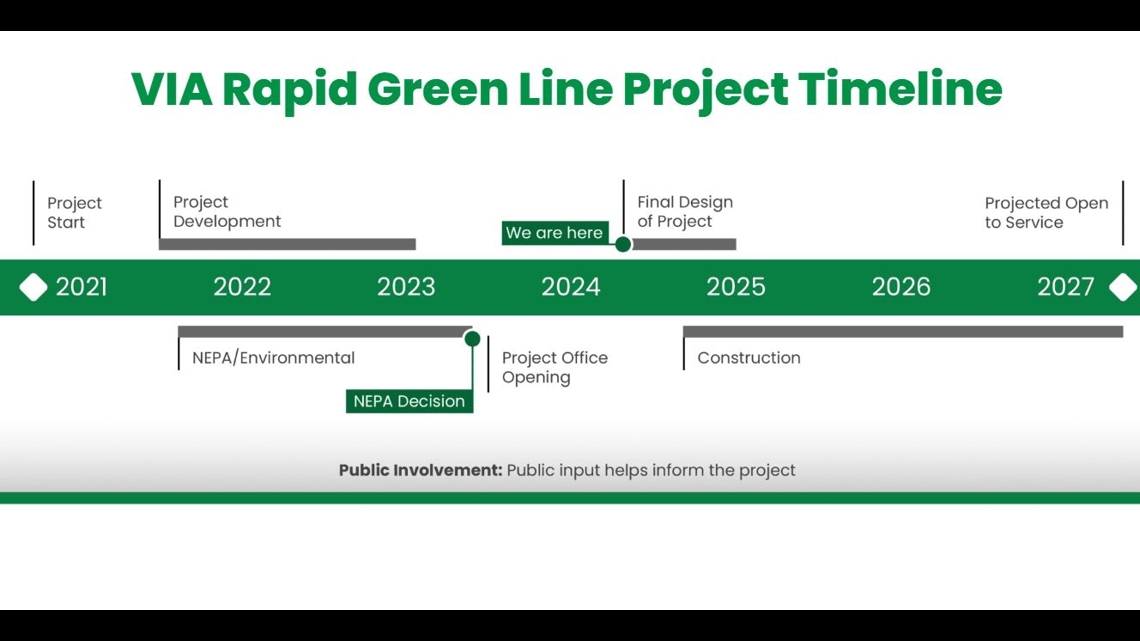
Click here to sign up for updates on the VIA Green Line and Silver Line.

